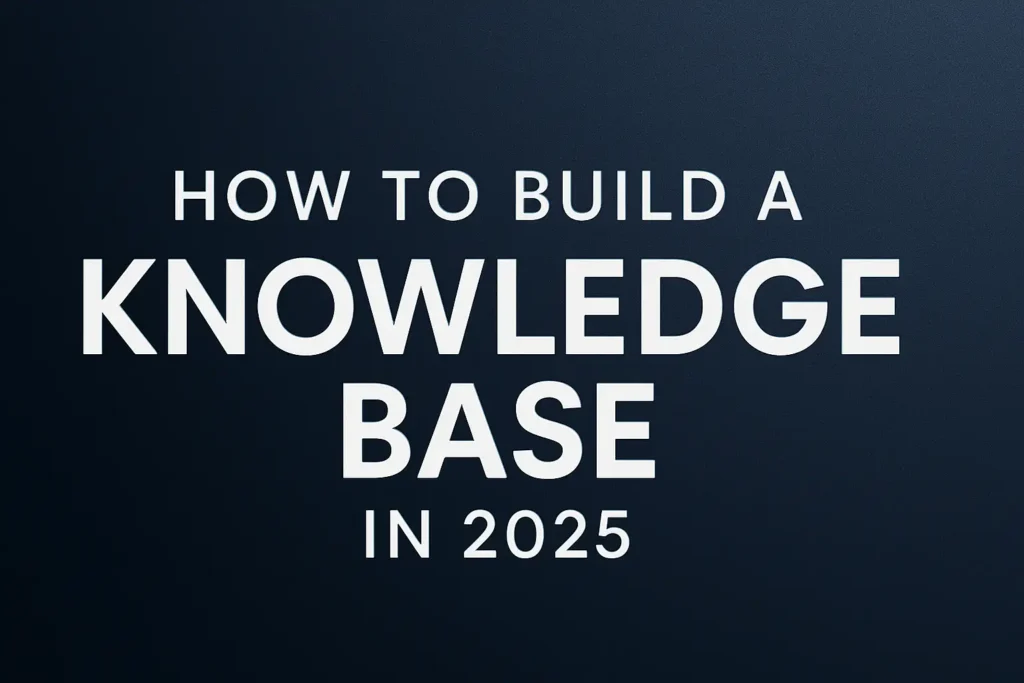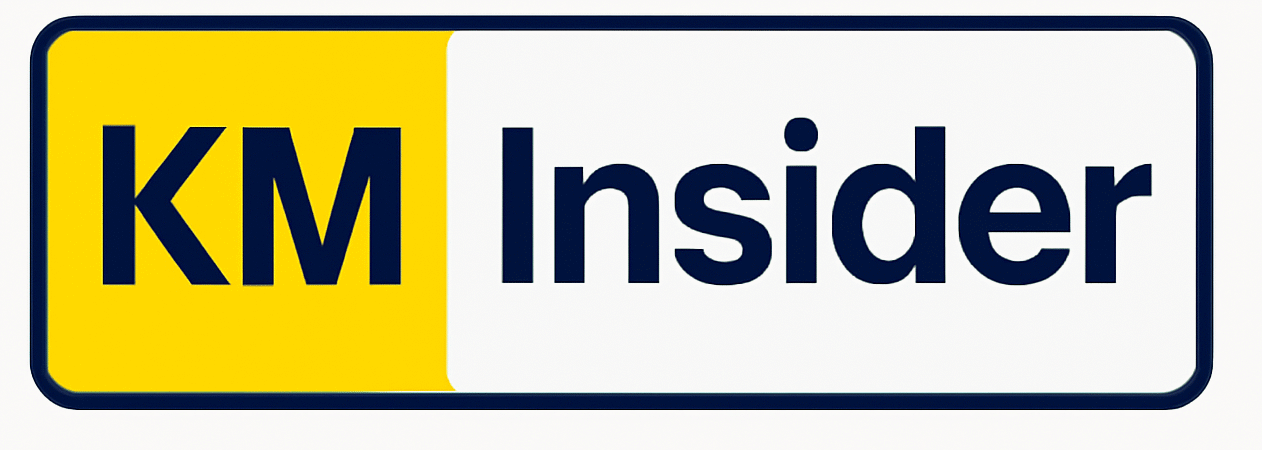Knowledge Base strategy that drives outcomes
A Knowledge Base in 2025 is a self-service engine that reduces ticket volume, accelerates time to resolution, and protects institutional knowledge. Start by defining the audience (customers, partners, or employees), channels (public help center, in‑product help, internal portal), and measurable outcomes such as deflection lift on the top intents, median seconds to first helpful answer, and article CSAT improvement. Anchor the work to a clear scope—products, regions, and languages for phase one—so quality and governance scale without sprawl.

Knowledge Base tooling and essential capabilities
Select software that balances fast authoring with powerful search and analytics. Authoring should include reusable templates, rich media, version history, review workflows, and localization support. Findability should include semantic search, synonyms, typo tolerance, and filters, with a prominent search bar and related-article linking. Analytics should surface “no-result” queries, low-CSAT articles with high views, freshness status, and session-level engagement. Prioritize integrations with chat, CRM/macros, product UI tooltips, and SSO to put answers where work happens.
Knowledge Base information architecture that users can predict
Design the structure around jobs to be done and lifecycle moments: getting started, billing, troubleshooting, configuration, release notes, and compliance. Keep the top level simple and scannable, then layer subcategories and tags as content grows. Create a controlled vocabulary and synonym map that reflects real user language; align terms like “can’t sign in” with “authentication,” and keep SEO and internal search aligned. Place high‑volume intents and core journeys at the top of the page and ensure easy escalation paths when self‑service isn’t enough.
Knowledge Base content planning based on intents
Mine tickets, chat logs, call drivers, search queries, and product telemetry to identify the 20–30 highest-volume intents for the initial backlog. Convert each intent into a task-focused article that leads with the happy path, followed by variants and edge cases. Group longer themes into guided collections (for example, “Onboarding” or “Billing basics”) while keeping individual articles single‑purpose and goal‑driven. Revisit the backlog weekly to add missing coverage for “no-result” searches and to refine confusing topics.
Knowledge Base writing standards for clarity and action
Write in plain language with short sentences, active voice, and user terminology. Lead with outcome-oriented titles (for example, “Reset your password”) and a brief “When to use” summary. Use numbered steps, each ending with an expected result, and include verified screenshots or short clips that reflect the current UI. Add “If this fails, try…” branches directly under the steps to reduce dead ends. End with related links for natural next steps and a simple feedback module like thumbs up/down with a short comment.
Knowledge Base templates that scale
- Article structure
- Title: outcome-focused and specific
- Summary: when to use, prerequisites, who it applies to
- Steps: numbered, concise, each with expected result
- Troubleshooting: common failure points and recovery
- Related: deeper or adjacent tasks
- Feedback: quick rating and comments
- Review checklist
- SME accuracy check completed
- Screens and labels current and annotated
- Accessibility checks (alt text, contrast, keyboard)
- Synonyms, tags, and category confirmed
- Next review date and owner set
Knowledge Base accessibility and inclusivity
Design for WCAG-aligned accessibility: clear headings, keyboard navigation, strong color contrast, and alt text for images. Provide captions and transcripts for videos, and avoid image-only steps so everyone can complete tasks. Use inclusive, culture-neutral language and avoid idioms. Ensure mobile readability with short paragraphs, logical subheadings, and generous spacing.
Knowledge Base AI and RAG that stays trustworthy
Implement retrieval-augmented generation (RAG) to power conversational experiences that are grounded only in approved Knowledge Base content. Index approved sources with appropriate permissions, chunk content thoughtfully, and attach canonical IDs so answers can cite the exact section. Instrument AI sessions to log user queries, retrieved passages, confidence, and ratings. Assign an AI steward to govern sources, refresh cadences, and safety policies, ensuring no unapproved or stale content influences answers.
Knowledge Base distribution and in‑flow help
Put answers where users need them. Embed the Knowledge Base in chat and suggest articles before escalation to a human. Link canonical articles in support macros to drive consistent resolutions and learning loops. In product, surface contextual “learn more” links from error states and complex setups. Offer a visible, respectful escalation path when self‑service isn’t sufficient to protect user trust.
Knowledge Base measurement and continuous improvement
Make metrics the engine of the roadmap. Track the percentage of sessions resolved without contact on top intents, contact rate per active user, time to first helpful answer, article CSAT, and freshness coverage. Review “no‑result” and reformulated searches every week to spot gaps or ambiguous language. Tie article usage to reduced handle time and deflected contacts to demonstrate value and prioritize high‑leverage updates.
Knowledge Base governance and operating rhythm
Name clear roles: a content owner for roadmap and quality, a managing editor for templates and tone, SMEs for accuracy with documented SLAs, and an AI steward for indexing and safety. Run a weekly triage for quick fixes (search gaps and low‑CSAT items), a monthly refresh sprint for top intents, and a quarterly taxonomy and synonym tune‑up. Archive or consolidate duplicates to prevent drift and mistrust.
Knowledge Base localization and freshness at scale
Prioritize locales by volume and regulatory needs. Use translation memory and terminology guides to keep terms consistent, with clear “fallback to English” behavior if localized content lags. Treat updates as part of product release checklists so key articles refresh before or at launch. Publish release notes in the Knowledge Base and link them to relevant tasks to improve discoverability.
Knowledge Base pitfalls to avoid
- Publishing long-tail content before covering the top intents that drive most tickets.
- Letting articles become “kitchen sinks” with multiple goals or audiences in one place.
- Launching AI without strict grounding and governance, causing hallucinations or policy drift.
- Allowing duplicates across teams, leading to conflicting answers and lost trust.
Knowledge Base 30–60–90 rollout plan
In the first 30 days, choose the platform, define the information architecture, set templates and tone, draft and publish the top 20 intents, and wire analytics and feedback. Days 31–60 expand coverage to 40–60 intents, embed in chat and CRM macros, run the first freshness audit, and update synonyms and filters. Days 61–90 pilot a narrow conversational experience using RAG on stable categories, evaluate accuracy and satisfaction weekly, and finalize governance and refresh cadences.
Knowledge Base dashboards leaders care about
- Coverage and freshness: percentage of high‑volume intents with articles; percentage reviewed within the SLA.
- Findability and speed: “no‑result” search rate, search reformulation rate, and median seconds to first helpful answer.
- Quality and trust: article CSAT trends, helpfulness by category, and AI session satisfaction.
- Operational impact: deflection on top intents, contact rate per active user, and agent handle-time reduction when macros include Knowledge Base links.
Knowledge Base final take
The most valuable Knowledge Base in 2025 is a living system: governed, grounded, accessible, and relentlessly measured. Focus the first wave on the highest‑volume intents, make search and language match how users think, and close the loop with weekly insights and monthly refreshes. With safe AI and disciplined ownership, the Knowledge Base becomes a durable advantage that compounds over time.
